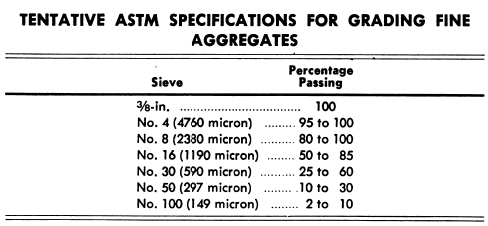Table of Contents
The processing of extensive pit run gravel in many instances employs a permanent or semi-permanent plant installation with a flexible system for movement of feed. The plant must be designed to produce a variety of product sizes and be capable of changing and blending products to meet varying customer specifications or to compensate for variations in the pit conditions. The flowsheet in this study is concerned with pit run material containing occasional boulders as coarse as 8-inches and the production of four marketable product sizes using a permanent type plant installation.

The Gravel and Sand Making Flowsheet
Depending on the type of equipment used for excavating the gravel, the method of transporting material from the pit to the plant is between conveyors, trucks, or where size permits, pumps and pipe lines. In a conveyor system the use of a movable feed hopper equipped with a reciprocating feeder and a series of portable field conveyors permits extension or relocation of the haulage system as the configuration of the pit changes. The operating costs for conveyors (or hydraulic transport systems) are normally substantially less than for trucks. For simplicity, belt haulage is shown on the flowsheet. The feed hopper should be of a size which can be readily moved but at the same time offer sufficient surge capacity to maintain a continuous flow of plant feed.
CRUSHING
The field conveyor system transports the pit run gravel to a single deck Heavy Duty Vibrating Screen to scalp off the plus 2-inch material. A Jaw Crusher with a setting of 2 – inches receives the screen oversize. The screen undersize and the jaw crusher discharge axe further, crushed to minus 1½-inch using a secondary cone-type crusher operating in closed circuit with a vibrating screen.
SCRUBBING AND SIZING
The minus 1½- inch material is conveyed to a Rotary Scrubber where water is added. The intense action created by the tumbling of rock particles thoroughly disintegrates the clay fraction and prepares the material for final sizing. The scrubber discharge is screened at ½- inch to produce a 1½” x ½” roadstone product which is stockpiled.
Next, the ½” x 3/8” pea gravel is screened out and stockpiled. An optional feature is the provision for rod mill grinding of a part of this product for producing additional quantities of fines, where the deposit is deficient in fine sand to meet required market specifications. Open circuit grinding using a Steel Head Rod Mill will provide plant flexibility. Depending on size specification required either a peripheral discharge or trunnion overflow grinding mill is used. A center peripheral discharge mill which feeds from both ends and discharges in the center provides high tonnage throughput and a minimum of ultra-fine sand.
The 3/8″ x 1/8″ sand fraction is washed in a Spiral Classifier and this product is stockpiled together with the coarser sand fraction from the hydraulic classifier.
The minus 1/8 -inch final screen undersize is hydraulically classified into two sizes. The coarser fraction is pumped to the Spiral Classifier, which receives the 3/8″ x 1/8″ product and is the finer constituent of this product.
The overflow from the hydraulic classifier is discharged to a SRL Pump and Cyclone. The underflow from the cyclone joins the finer fraction from the hydraulic classifier to produce the 1/8″ x 0 sand product.
Radial stackers are used for stockpiling to achieve the maximum storage capacity. Front-end loaders serve the stockpile area to load the finished products into trucks for marketing.
By changing screen cloths and varying the secondary crusher settings virtually any proportion of materials can be produced to meet specification requirements.
SAMPLING AND BLENDING TO MEET SPECIFICATIONS
Sand quality and specifications become more critical as concrete strength specification increases for highway and commercial construction. The burden of producing and meeting specification sand rests on the pit operator. Acceptance and rejection of sand is normally made at the delivery destination. Despite the careful blending practices at the plant, in transit segregation of sand and gravel by sizes presents problems in grab sampling techniques at destination. This problem can be effectively solved by automatic sampling at the plant loading facilities with the sampling unit producing two samples, one as a referee or control sample and the other for customer analysis. Elimination of the “human error” factor in hand sampling of specification aggregate by use of automatic samplers provides a low-cost method of quality control for specification sand production. Dependable quality control also assures good customer relationships.
In-process sampling is a rapid and reliable method of spotting imperfect size separation resulting from broken screen cloth or improper classification.


Source: This article is a reproduction of an excerpt of “In the Public Domain” documents held in 911Metallurgy Corp’s private library.
